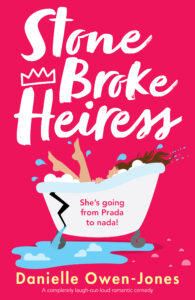 It was as I walked along the tree-lined Princes Boulevard, a leafy avenue in the heart of Toxteth, while the warm sunshine dappled the emerald leaves, that I admitted defeat – I was seeing the area with new, sober eyes and I was ashamed of how fast I was to judge it at first.
It was as I walked along the tree-lined Princes Boulevard, a leafy avenue in the heart of Toxteth, while the warm sunshine dappled the emerald leaves, that I admitted defeat – I was seeing the area with new, sober eyes and I was ashamed of how fast I was to judge it at first.
The boulevard was a hive of activity on such a beautiful day. Cyclists pulled over from the designated cycle lanes and gulped from fluorescent sports bottles. Visitors stopped to marvel at the art installations and read the plaques that revealed the history of the area. I stood alongside the groups and pored over the amazing heritage. Each plaque explored a different topic – the religious buildings reflecting its multi-faith community, its once thriving nightlife, the history of activism and the legacy of Liverpool’s role as a major port city.
Through my ignorance, all I’d associated Toxteth with was the riots, but here it was, resplendent in its regeneration and the proud community basking in its glory.
 An installation at one end of the boulevard – just before the inviting, gold adorned gates of leafy Princes Park – was especially eye-catching, with striking golden text and gilded patterns inscribed in the stone stating: ‘Our Home, Our Life, Our Future’. Would it be my home, my life and my future too?
An installation at one end of the boulevard – just before the inviting, gold adorned gates of leafy Princes Park – was especially eye-catching, with striking golden text and gilded patterns inscribed in the stone stating: ‘Our Home, Our Life, Our Future’. Would it be my home, my life and my future too?
The freshly laid, pastel grey pavement was decorated with the occasional mosaic showcasing inspirational quotes. I stood above the one featuring words once spoken by Nelson Mandela: ‘The greatest glory in living is not in never falling, but in rising every time we fall.’
I had my answer; Toxteth had given it to me. I turned and headed back to my flat – back home.
My debut novel, Stone Broke Heiress, was originally set in London. It was my agent’s brilliant idea during pre-submission edits to change the location to Liverpool, Toxteth specifically. It sounds like a total cliché, but that really was a lightbulb moment. The new, Northern setting that I knew so well transformed the book in every way. From a pitch perspective, it gave the book an interesting angle for publishers when Clare took it out on sub (it was picked up by Bookouture in a two-book deal). But the setting also affected every aspect of the book and the more I wrote about the city I loved, the more the ideas flowed and the story grew stronger.
 There was something else important to consider too. Unfortunately, the first thought that springs to a lot of minds when people hear ‘Toxteth’ is the 1981 riots. When I was researching the area for my book, I knew I had to include a reference to the riots forty years ago, together with the challenging years the area experienced afterwards. However, Toxteth has undergone an exciting period of transformation over recent years and I made a conscious effort to highlight the positive changes when writing those scenes.
There was something else important to consider too. Unfortunately, the first thought that springs to a lot of minds when people hear ‘Toxteth’ is the 1981 riots. When I was researching the area for my book, I knew I had to include a reference to the riots forty years ago, together with the challenging years the area experienced afterwards. However, Toxteth has undergone an exciting period of transformation over recent years and I made a conscious effort to highlight the positive changes when writing those scenes.
A significant development in the area is the £4million, newly renovated Princes Boulevard – a leafy, tree-lined avenue that runs through the centre of Toxteth. The history of the area, both good and bad, is told through installations and information plaques dotted along the stunning boulevard. This example of regeneration is a vital part of Toxteth – combining both its history and its future. That’s why I chose the boulevard as the backdrop to a key scene in my book, when the protagonist, Bella, sees the area through new eyes and regrets how fast she was to judge it based on first impressions.
